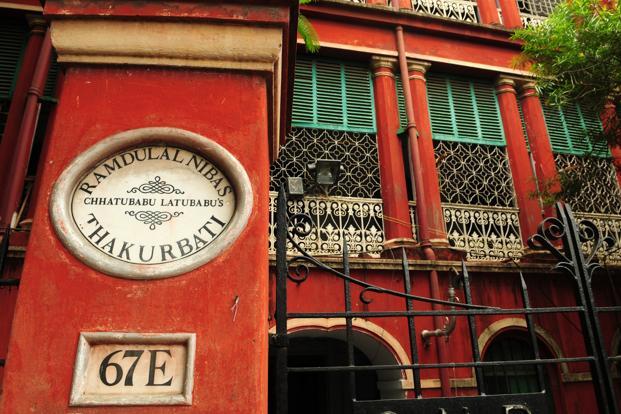
In the 20th century alone, hundreds of banks went belly up in the city, leaving many landed families in ruin
Photographs by Indranil Bhoumik.
It is historically documented that one Ramdulal De (1752-1825) rose from penury to become one of Kolkata’s wealthiest businessmen ever by wagering on the wreck of a ship.
As a manager in a shipping company, De was a man of modest means when he bid an astounding Rs14,000 to snap up a sunken ship. Within hours, he managed to sell it to a European with better knowledge of its cargo for almost Rs1 lakh.
No one knows what happened to the European who bought the ship, but De never looked back.
The more recent emergence of Chandra Shekhar Ghosh as an entrepreneur is equally fascinating.
Even in the early 2000s, he was travelling by public transport into the interiors of West Bengal and neighbouring states to stabilize the operations of a fledgling microfinance institution.
In only 15 years, Ghosh’s Bandhan Financial Services Pvt. Ltd is turning itself into a bank with bruised and battered Bengali pride riding on it for redemption.
West Bengal has a chequered history in banking. It was in Kolkata—then Calcutta—where the first deposit-taking bank was founded in the early 1770s.
Alexander and Co.—a British managing agency, or a diversified conglomerate—launched Bank of Hindostan in partnership with local moneylenders, or indigenous bankers called shroffs or banians in those days.
De was at that time one of the leading banians.
Many more banks were launched in the late 18th century, but all of them collapsed within 50-60 years. The reason? Speculation and overtrading by their founders. Bank of Hindostan survived three runs, but eventually went under in 1832 along with its founder Alexander and Co.
In 1806, Bank of Calcutta—one of the forebears of today’s State Bank of India—was established by a government charter. But because it was risk-averse and wouldn’t lend for more than three months, local businessmen—both British and Indian—continued to launch private banks.
The result was the same—more bank failures. The most storied failure was that of Union Bank Ltd (1829-48), founded by illustrious Bengalis such as prince Dwarkanath Tagore (poet Rabindranath Tagore’s grandfather) in partnership with British companies.
When it collapsed, De’s sons Asutosh and Pramatha Nath had to pick up the tab for its bankruptcy. Whereas their father remained a banian, they had become shareholders of Union Bank.
According to some historians, Bengalis turned to safe-haven investments such as real estate following the collapse of Union Bank. Property prices zoomed.
Described by many historians as reckless destroyers of wealth, Bengalis returned to banking again in the early 20th century, ostensibly with the noble purpose of backing Indian businessmen to compete against the British.
These ventures were even more short-lived. Some wound up within years.
Between the early 1940s and the mid-1960s, West Bengal had gained unparalleled notoriety in bank failures, and former SBI chairman D.N. Ghosh blames it on greed, corruption and lack of regulation.
In the 20th century alone, hundreds of banks went belly up in Kolkata, leaving many landed families in ruin.
The state’s inglorious past has weighed on the minds of regulators, according to D.N. Ghosh.
Bandhan is a break from the past. It has earned the regulator’s confidence, and its conservative and risk-averse founder, Chandra Shekhar Ghosh, is the Bengali community’s best bet for redemption.

source: http://www.mintonsunday.livemint.com / Mint On Sunday / Home> Photo Essay / by Aniek Paul / Sunday – August 23rd, 2015